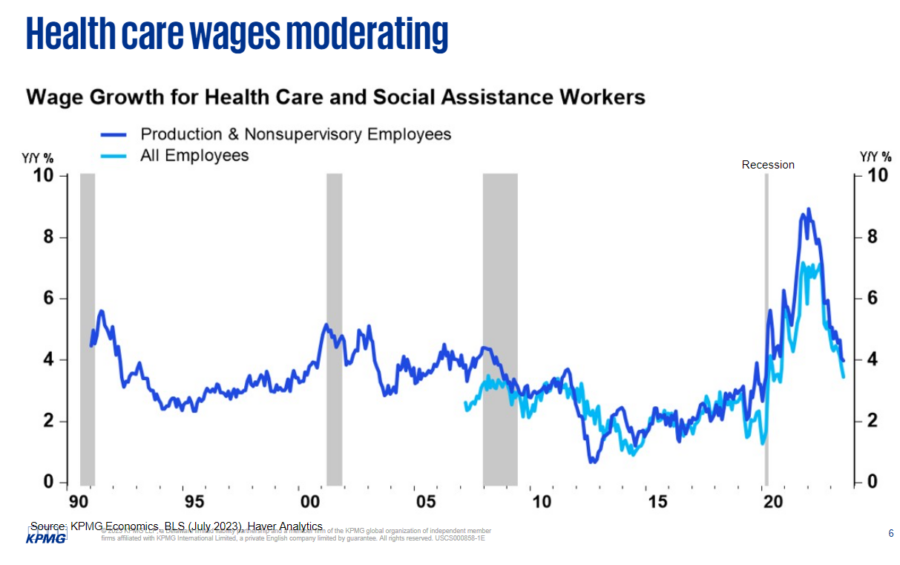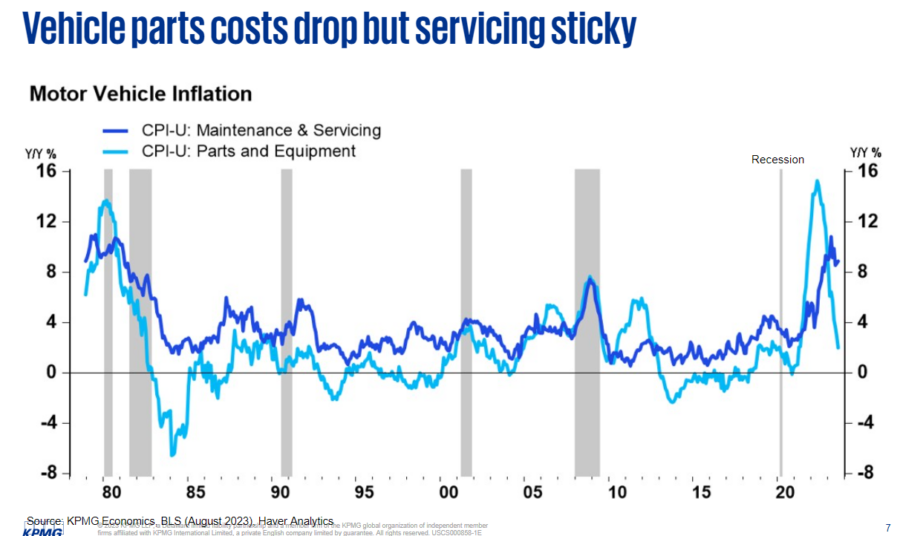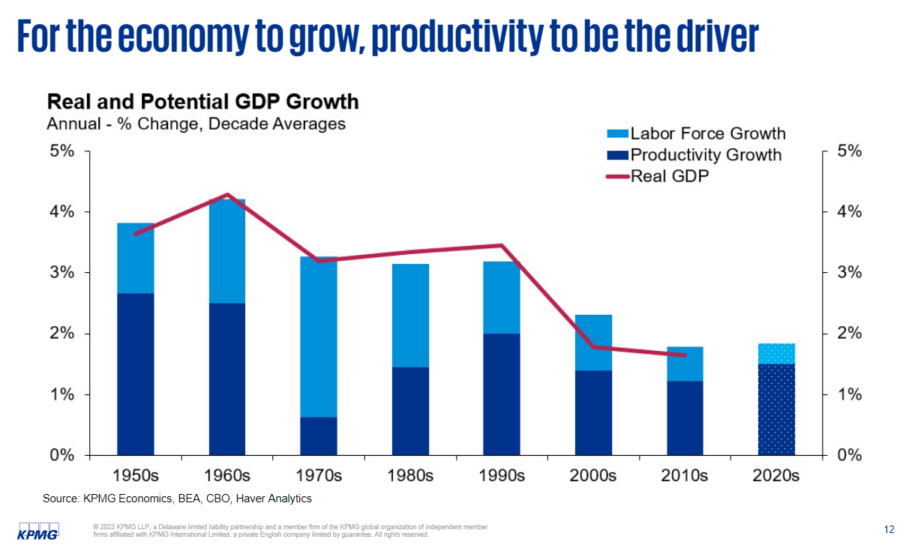Talent gap narrows in financial services, but macro-economic concerns remain

At its peak, the labor shortage in financial services hit an estimated 500,000 openings.
That number is down to about 325,000 and on a steady decline, said Kenneth Kim, a senior economist at KPMG. He spoke this week during the KPMG 35th Annual Insurance Industry Conference in Orlando, Fla.
The employment news for financial services is good, Kim said, but it isn't great.
"Yes, [job openings have] come down but if you take the latest figure and go back in time, just draw a straight line, you can see still see that the current level is still higher than the highs in the previous two business cycles -- the business cycle that lasted from 2001 to 2008, and the one that went from 2009 to the beginning of 2020."
A lot of what has happened with wages and employment can be traced to inflation and rising interest rates. Health care and social workers were seeing wage increases in the 9% range for a short time, Kim noted. Those rising wages are cooling, but remain higher than pre-COVID-19.
"The Fed's interest rate increases, bringing up from zero percent to five-and-a-half percent currently is having the intended impact," he said, "not only on inflation, but also on labor market costs."
KPMG: Rate hikes are done
On Wednesday, the Federal Reserve said it will maintain its target range for the federal funds rate at 5.25% to 5.5%, as recent economic indicators show a mix of promising and concerning signals.
Analysts speculated on Fed making at least one more tweak in interest rates before the end of the year, but Chairman Jerome Powell said that final decision by the board of governors would be dictated by data.
KPMG does not expect any further rate hikes, Kim said, a stable forecast that should please financial services.
"We actually believe the Fed is finished raising rates for this interest rate cycle," he said. "But nevertheless, the bottom line is that whether they're done or they raise one more potentially 25 basis points, there is light at the end of the tunnel. Interest rates will not be moving materially higher in the coming year and next year."
High inflation had a major impact in the property and casualty world, as vehicle parts and repair costs skyrocketed. The cost of parts is dropping, but service costs remain high, Kim said.
"Even though the parts costs have come down sharply from double digits, maintenance, servicing costs for vehicles is still very elevated," Kim noted. "Again, it's the highest since the 1980s currently, even though other measures of CPI have come down significantly."
It's a similar story in the housing sector, where the costs of materials have come down sharply. It's an indication that the Fed's work on interest rates is having the desired effect, Kim said.
Immigration fueling growth
In the decades to come, as U.S. birth rates remain historically low, immigration will become a growing driver of population growth, Kim explained.
"This will be the challenge for the for our economy going forward," he said, adding that future GDP [Gross Domestic Product] growth is partially dependent on labor growth. "Household sizes have been becoming smaller, family sizes have been becoming smaller. But what that means is that that is the source of a future talent, right? So where is our growth going to come from?"
"Everything that we've heard about ... Gen AI, workforce, upscaling digital transformation, machine learning, large language models, all that fused into your current and future workforce, because that source of labor is going to be shrinking as we go forward," Kim warned.
Finally, Kim addressed the looming federal debt problem. The Congressional Budget Office is projecting that the federal debt will match the size of the overall U.S. economy next year.
"So what does that mean?" Kim said. "Well, interest rates are now under pressure. And there is the growing realization that this is a concern."
The United States has work to do to avoid having its own "Japan moment," Kim concluded. With a low birthrate and aging population, Japan's social security system is under strain and the country suffers from labor shortages.
"If we get high growth that would be a good thing for our economy going forward," Kim said. "And I am hopeful that we can do that."
InsuranceNewsNet Senior Editor John Hilton covered business and other beats in more than 20 years of daily journalism. John may be reached at [email protected]. Follow him on Twitter @INNJohnH.
© Entire contents copyright 2023 by InsuranceNewsNet.com Inc. All rights reserved. No part of this article may be reprinted without the expressed written consent from InsuranceNewsNet.com.
InsuranceNewsNet Senior Editor John Hilton has covered business and other beats in more than 20 years of daily journalism. John may be reached at [email protected]. Follow him on Twitter @INNJohnH.












North Dakota judge halts long-term care bailout plan crafted in Pa.
Making your money last: The two-bucket investment approach
Advisor News
- Economy showing momentum despite uncertainty
- 7 ways financial advisors can benefit by giving back to nonprofits
- Emergency Preparedness: How advisors can prepare clients for hurricanes
- Federal employees: An emerging market for advisors
- The financial advisor’s guide to creating an effective value proposition
More Advisor NewsAnnuity News
Health/Employee Benefits News
- Minnesota judge: lawsuit over UnitedHealth use of AI can continue
- After more than 1,000 layoffs, worries persist about CVS Health's future in Connecticut
- Health insurance for millions could vanish as states put Medicaid expansion on chopping block
- AG releases tips to stay protected from debt collectors
- NE Lawmakers give First-Round Yes to Bill to Increase Medicaid Reimbursement Rates without General Fund Dollars
More Health/Employee Benefits NewsLife Insurance News
- AM Best Places Credit Ratings of Banner Life Insurance Company and William Penn Life Insurance Company of New York Under Review With Developing Implications
- Best's Review Examines Value in Innovation Culture
- Initial Registration Statement for Employee Benefit Plan (Form S-8)
- Securian Financial Enhances Its Flagship Indexed Universal Life Insurance Product
- AM Best Affirms Credit Ratings of The Dai-ichi Life Insurance Company, Limited
More Life Insurance News